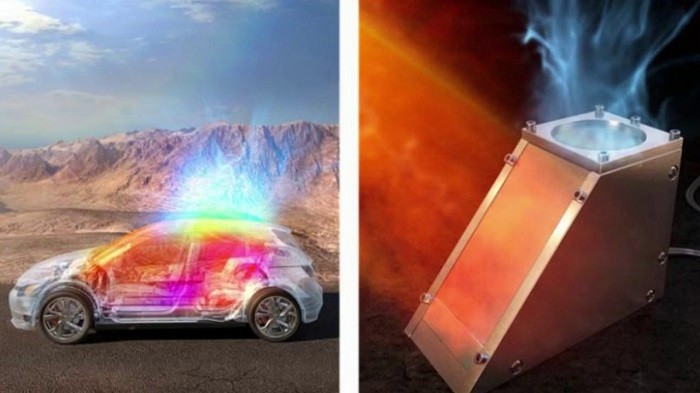In Kuwait we do not have to imagine entering a sizzling hot car in summer; we experience it annually. While turning on the AC remotely before we enter our vehicle is now possible on several new model cars, this feature not only uses energy it also comes at the expense of engine and battery health. Scientists in South Korea have now come up with an ingenious device that passively absorbs radiative heat from inside enclosed areas and transfers it to the outside.
The enclosed space of your car parked out in the sun gets heated due to sunlight passing in through the transparent windows, as well as heat conducted in from the roof and sides of the vehicle. At the same time, the thermal radiation re-emitted by the heated car interior cannot escape through the windows, creating a ‘greenhouse effect’ that heats the car interior on some days to temperatures over 80℃. Elderly people and children are at a particularly high risk of suffering heat-stroke or hyperthermia at such temperatures.
The heat inside a parked vehicle can be released by active cooling methods such as using the vehicle’s fan or AC, but this involves energy expenditure and is not a sustainable solution. Another option is to roll down the windows and move the car, which while it does not involve spending additional energy is not an ideal solution in inclement weather, in polluted environments or when driving along a highway.
Scientists from Gwangju Institute of Science and Technology (GIST) in South Korea have developed a new type of passive cooling technology to solve this issue. The new device, called ‘Janus Emitter Technology’ or JET for short, comprises a stack of patterned quartz, silver, and polydimethylsiloxane thin layers. Each face of the JET has unique properties for passively cooling enclosed spaces. The bottom side absorbs a broad spectrum of thermal radiation from inside the enclosure and, re-emits this energy to the atmosphere on the top side of the device in a selective frequency range that maximizes emissivity.
The JET requires no electricity and no conscious effort from the user, which makes it a sustainable way of keeping the temperature of stationary vehicles, building interiors, and solar cells low. The researchers said that their work is the first to address passive radiative cooling for enclosed spaces, and they hoped it would create a ripple effect that bolsters research in this field.
In Kuwait, we cannot wait for this novel technology to arrive, so that everyone can get into their cars parked outside in summer and drive off, without the fear of getting baked in the bargain

